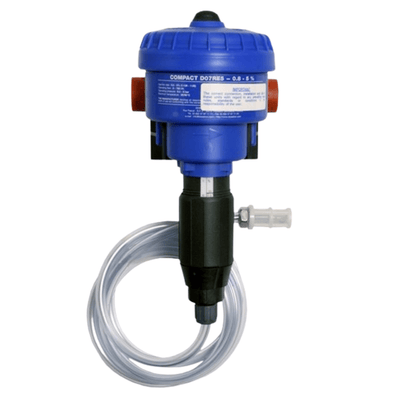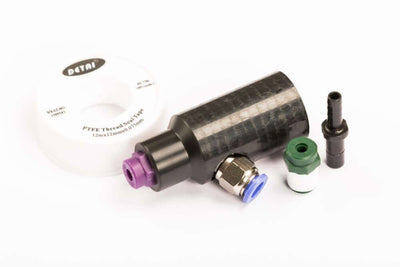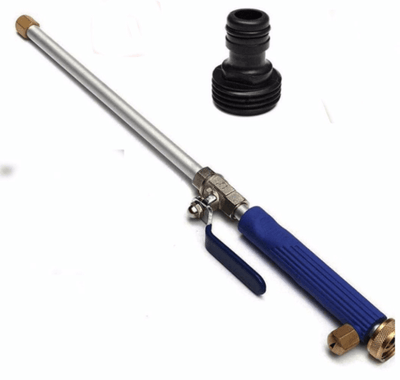The Ultimate Sodium Hypochlorite Mixing Ratio Guide For Soft Washing
Achieve the ideal sodium hypochlorite mixing ratio for your cleaning needs with our expert guide.
Cleaning exterior surfaces like walls, roofs, concrete, and wood with soft washing is safe and effective. However, it's crucial to use the right cleaning solution and mix it properly in order to get the best results. Everything you need to know about sodium hypochlorite mixing ratios for soft washing solutions is covered in this guide.
Understanding Sodium Hypochlorite, Part I
Let's take a closer look at sodium hypochlorite and its characteristics before getting into mixing ratios.
A chemical called sodium hypochlorite is frequently employed as bleach and a disinfectant. There are two main grades available: commercial and household.
Sodium hypochlorite of the commercial grade is typically more concentrated and designed for industrial uses. It needs to be carefully diluted before use because handling it can be hazardous. On the other hand, sodium hypochlorite of the household variety is less potent and frequently used for cleaning tasks.
If not handled properly, sodium hypochlorite can be dangerous. It may irritate the skin, the eyes, the respiratory system, and even result in chemical burns. When handling sodium hypochlorite, it's important to wear the proper protective clothing, such as gloves and goggles. Sodium hypochlorite must also be kept away from other chemicals, particularly acids, because they can react dangerously with it.

Calculating Mixing Ratios in Part II
The secret to making efficient soft washing solutions is mixing ratios.
The proportion of each ingredient in a solution is referred to as a mixing ratio. The ratio for sodium hypochlorite solutions typically refers to how much sodium hypochlorite is present in relation to water.
You must know the concentration of your sodium hypochlorite solution in order to calculate the appropriate mixing ratio for your soft washing solution. On the bottle's label, the concentration is typically expressed as a percentage.
You would need to combine one part sodium hypochlorite with four parts water, for instance, if you had a 12.5% sodium hypochlorite solution and wanted to make a soft washing solution with a 1:4 mixing ratio. You must use some basic maths to determine the precise amounts of each ingredient.
Here is an illustration of how to calculate a 1:4 mixing ratio:
It's significant to remember that mixing ratios can change based on the precise cleaning application and the kind of surface being cleaned. Always follow recommended practises for soft washing solutions and consult the manufacturer's recommendations.
Soft Washing With 15% Sodium Hypochlorite
After exploring the fundamentals of softwashing, consider enhancing your toolkit with Clever Wash Softwash Surfactant. This product ensures a deeper clean, maintaining the pristine appearance of your exteriors.
When you are makeing your softwash mix also add your clever wash surfactant (200:1) for example:
1L of Soft Wash Recipe add 5ml Clever Wash
5L of Soft Wash Recipe add 25ml Clever Wash
10L of Soft Wash Recipe add 50ml Clever Wash
20L of Soft Wash Recipe add 100ml Clever Wash
30L of Soft Wash Recipe add 150ml Clever Wash
40L of Soft Wash Recipe add 200ml Clever Wash
50L of Soft Wash Recipe add 250ml Clever Wash
60L of Soft Wash Recipe add 300ml Clever Wash
70L of Soft Wash Recipe add 350ml Clever Wash
80L of Soft Wash Recipe add 400ml Clever Wash
90L of Soft Wash Recipe add 450ml Clever Wash
100L of Soft Wash Recipe add 500ml Clever Wash
Example 1
Here is an example of a batch mix 100L recipe @ 2.14%
1 part Sodium Hypochlorite to 6 parts water = a total of 7 parts
Sodium Hypochlorite @ 15% divided by 7 parts gives you 2.14% softwash recipe.
100L / 7 = 14
100L - 14 = 86
So you would need 86L of water and 14L of Sodium Hypochlorite which is 100L in total at a softwash recipe strength of 2.14%
Don't forget to add 500ml Clever Wash Surfactant to your mix
Example 2
Here is an example of a batch mix 125L recipe @ 2.5%
1 part Sodium Hypochlorite to 5 parts water = a total of 6 parts
Sodium Hypochlorite @ 15% divided by 6 parts gives you 2.5% softwash recipe.
125L / 6 = 20
125L - 20 = 105
So you would need 105L of water and 20L of Sodium Hypochlorite which is 125L in total at a softwash recipe strength of 2.5%
Don't forget to add 625ml Clever Wash Surfactant to your mix
|
1:1 7.5% |
1:2 5% |
1:3 3.75% |
1:4 3% |
1:5 2.5% |
1:6 2.14% |
1:7 1.8% |
1:8 1.6% |
1:9 1.5% |
1:14 1% |
|
| 10L |
5 |
3 | 2.5 | 2 | 1.6 | 1.4 | 1.25 | 1.1 | 1 | 0.6 |
| 20L | 10 | 6 | 5 | 4 | 3.3 | 2.8 | 2.5 | 2.2 | 2 | 1.3 |
| 50L | 25 | 16 | 12.5 | 10 | 8.3 | 7.7 | 6.25 | 5.5 | 5 | 3.3 |
| 100L | 50 | 33 | 25 | 20 | 16.5 | 14 | 12.5 | 11 | 10 | 6.6 |
| 200L | 100 | 66 | 50 | 40 | 33 | 28.5 | 25 | 22 | 20 | 13.3 |
So find the required % recipe you want to work with, then take that figure away from the litres you want to make.
Example
I want to make 100L of 3% mix
100L - 20L = 80L
80L of water + 20L of Sodium Hypochlorite = 100L of 3% softwash recipe.
Don't forget to add 500ml Clever Wash Surfactant to your mix
Part III: Sodium Hypochlorite Handling and Mixing
When combining sodium hypochlorite, safety and caution must be taken.
Make sure you have the proper personal protective equipment, such as gloves and goggles, before mixing. To avoid breathing in the fumes, make sure to mix sodium hypochlorite in a space that is well-ventilated.
Always add sodium hypochlorite to water when combining the two substances; never the other way around. This avoids the mixture sputtering and possibly resulting in chemical burns. Additionally, make sure to thoroughly stir the mixture to ensure that the sodium hypochlorite is dispersed throughout the mixture.
After mixing, keep the sodium hypochlorite solution out of direct sunlight and in a space that is well-ventilated. Over time, sodium hypochlorite can break down, especially if it is exposed to air, heat, and sunlight. This decomposition may result in a drop in sodium hypochlorite concentration and a reduction in the cleaning solution's efficacy.
The shelf life of sodium hypochlorite solutions must be taken into consideration. Use the mixture shortly after mixing for the best results. Consider adding a stabiliser, such as sodium bisulfite, to the solution if you need to store it for an extended period of time to avoid decomposition.
Always abide by local laws and regulations when disposing of sodium hypochlorite solutions. Never put sodium hypochlorite in the garbage or the toilet. For instructions on proper disposal, speak with your neighbourhood waste facility instead.
As you consider the varied challenges of softwashing, the Gel X Pro Render Cleaner emerges as a must-have. Its specialized formula is perfect for tackling tough stains on renders, ensuring a spotless finish.
In your journey towards professional-grade cleaning, consider incorporating the Soft Wash Pro 50 Biocide. This biocide is renowned for its effectiveness, ensuring a comprehensive clean that targets even the most stubborn organic growth.
For addressing the common issue of rust stains, the Rust X Pro Rust Stain Remover is a standout solution. Its specialized formula effectively removes unsightly rust stains, restoring surfaces to their original condition.
Stay Safe when mixing
Here is a Health and safety executive guide to diluting chemical Concentrates. This information will help employers (including the selfemployed and franchisees) comply with the Control of Substances Hazardous to Health Regulations 2002 (COSHH), as amended, to control exposure and protect workers’ health. It is also useful for trade union safety representatives.This sheet describes good practice using personal protective equipment (PPE).
It covers the points you need to follow to reduce exposure to an adequate level.
It is important to follow all the points, or use equally effective measures.
Some concentrates are biocidal products. Authorised products are safe for use so long as you follow the instructions on the label. Some chemicals can be flammable, so your controls must suit those hazards too. Look at the safety data sheet for more information. Download HERE

For maintaining the aesthetic of roofs, the Moss Guard Pro is an excellent addition. It not only effectively removes moss but also prevents its regrowth, ensuring long-lasting roof cleanliness.
Conclusion
An extremely potent and useful component of soft washing solutions is sodium hypochlorite. You can achieve fantastic results while reducing risks by being aware of the appropriate mixing ratios and safe handling techniques. Always remember to use the proper protective equipment, mix thoroughly, and abide by the manufacturer's instructions for best results. You can use sodium hypochlorite solutions to safely and efficiently clean a variety of exterior surfaces if you keep these suggestions in mind.
Ready to achieve stunning, long-lasting results with your cleaning projects?
Enhance your cleaning efficiency with the Safewash Super Concentrate. This super-concentrated solution offers powerful cleaning performance, making it an essential part of any softwashing regimen.
Add a pleasant aroma to your cleaning process with Fresh Wash Soft Washing Masking Scent. This product not only aids in masking odors during cleaning but also leaves a refreshing scent, enhancing the overall experience.
Consider the Lead X Pro Ready to Use Lead Stain Remover for specialized stain removal. This product is specifically designed to tackle lead stains, ensuring your surfaces are not only clean but also stain-free.
Head over to our softwash chemicals and check out our range of top-quality Softwash chemicals, including Clever Wash Sufactant. With our powerful, eco-friendly solutions, you can get the job done right and impress your clients every time. Don't wait - take your cleaning game to the next level and order today!















